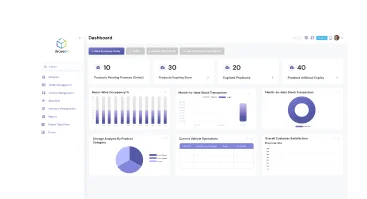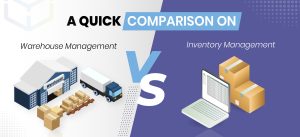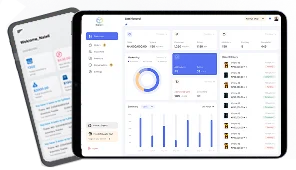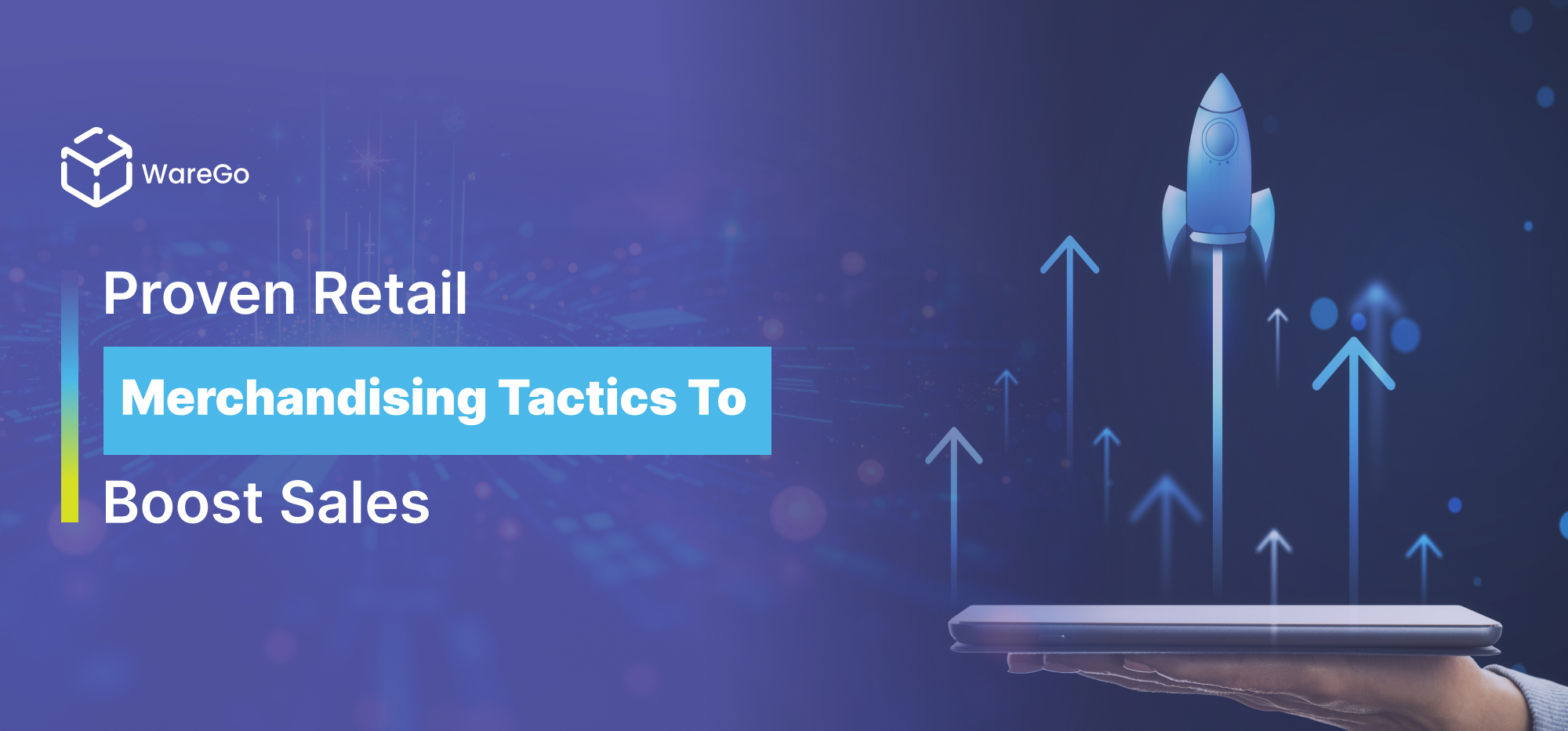
Although ecommerce continues to grow in popularity, there is no doubt that in-store shopping is here to stay. So while it is crucial to develop digital sales platforms, SMEs and large enterprises should not lose sight of brick-and-mortar outlets.
This is why retail merchandising and retail wms truly matters. Hence, it will remain a top priority for entities that are serious about driving growth.
We will explain in simple words, retail merchandising tips that are known to work.
Table of Contents
What is Retail Merchandising
Retail merchandising is concerned with organizing merchandise in the most appealing way possible, so that customers buy more than they intended.
It is all about arranging your products in an intelligent way to drive attention and engagement from customers. Moreover, retail merchandising also aims to drive the sales of add-ons and accessories related to products that customers are interested in.
There are so many ways to implement this powerful sales strategy. For example, garment stores can arrange changing rooms so that buyers try out different garments – this boosts engagement and increases the likelihood of sales.
Another key aspect is making sense of the data. Business leaders and managers should carefully analyze inventory data to find insights for driving sales and cutting costs. Software is absolutely critical for ensuring an excellent customer experience, the availability of stock, and the prevention of lost sales.
Inventory Management Software – How it Helps
Inventory management software is an indispensable tool for helping your business optimally manage its inventory, ensure lean stock levels, and timely supply of items for your customers. They have cutting-edge features, such as barcode/RFID scanning and POS terminal support, built in to ensure speedy customer service and automatic stock updates. Analysis of inventory sales data can show you what has the potential to sell and what doesn’t. All these features can strongly support your retail merchandising strategy.
Hence, you should rely on dependable inventory solutions, such as WareGo, to take your retail merchandising strategy to the next level.
Our friendly experts can explain how WareGo helps.
Chat With Us!Why Retail Store Merchandising Matters
Retail store merchandising offers numerous benefits to your business. For example, a good retail merchandising strategy will encourage customers to buy from your store instead of your competitor’s.
Retail merchandising solutions can vastly improve the conversion rate, turning casual window shoppers into loyal paying customers. One way it does that is by providing simple choices that can help them decide what they really want to buy. By reducing overwhelm, you can give customers the confidence they need to buy and thus prevent them from leaving your store without buying.
It is all about facilitating your customers at all steps of their journey to drive positive engagement.
Retail merchandising is a bit like SEO in some ways. Just like good SEO, it may not be immediately obvious, but it will have a strong effect on conversions. One way it does that is by focusing customer attention in the right direction. For example, lighting draws them towards visually appealing quality products while signage piques curiosity, making them eager to explore further.
Color strongly influences consumer psychology; hence, this too matters for retail merchandising. By using certain colors and lighting combinations, savvy brands can create an ambiance of serenity that will encourage customers to stay longer and buy more from their stores.
Above all, business leaders and managers should examine the data to distinguish between fast-moving goods and unprofitable slow-moving items.
Retail Merchandising Examples
Here are some important retail merchandising examples that will give a good idea of how it’s done.
- Conduct market research to determine the types of products buyers desire
- Maintaining optimal stock to fulfill customer demand
- Strategic product placement in the right places to attract buyers’ attention
- Creating window displays and in-store displays
- Planning your store space to facilitate easy navigation
- Designing special displays to showcase new items
- Providing free samples
- Placing complementary products together to facilitate buying
- Making the store look clean and visually appealing
Key Elements of an In-Store Merchandising Plan
The elements provided are crucial for any good merchandising plan.
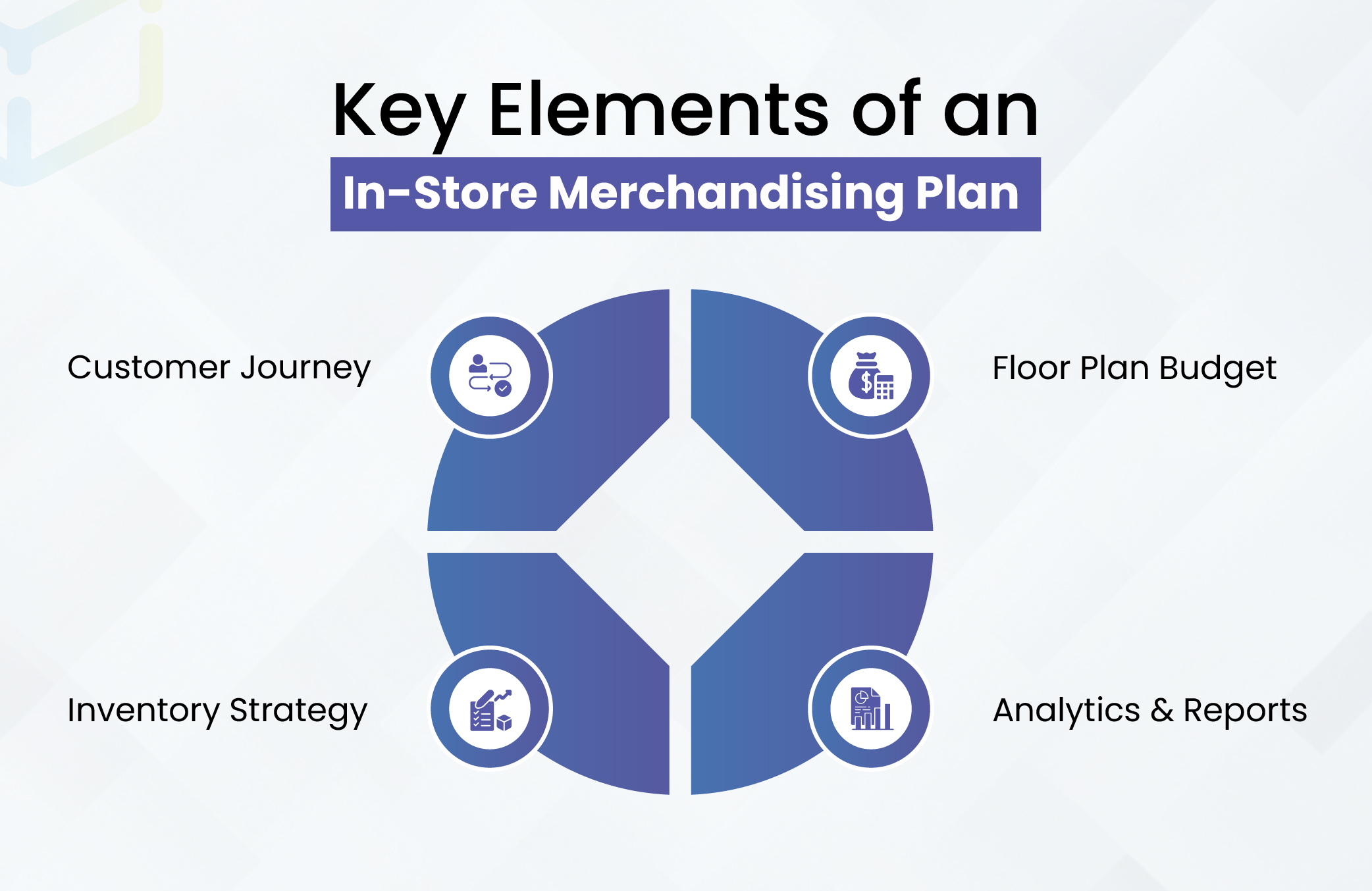
- A plan that outlines the customer journey – shows how customers travel through the outlet.
- A floor plan that is suitable for making appropriate changes for holidays and different seasons.
- A budget that caters to fixtures, props, signage, and lighting.
- A powerful inventory strategy complete with software that minimizes stockouts, overstocking, and high storage costs.
- In-depth analytics and reports that can reveal the product variety that customers are more willing to buy.
The time that it takes to plan and implement your merchandising strategy will vary depending on your situation. This is somewhat like web design and development. Factors that will play a role include SKU volume, window display sizes, special requirements (for example, high-cost items will require more security), available floor space, and more.
Large chains employ teams of specialists who can formulate the merchandising plan and then organize the entire floor space according to plan.
SMEs will face more challenges in this field, since they may not have full-time specialists to do the job. However, this area is far too crucial to overlook. If doing it in-house is a problem, then the business should seek the services of professionals specializing in this.
This will have a direct effect on customer experience because when they step into a physical store, customers desire a more profound experience than your website, for instance. Even with a strong website and social media presence, many customers still expect to walk into a store and physically hold the item before making a purchase.
Hence, it is essential to apply the principles of effective merchandising to create the best possible customer journey. This will give you a competitive edge.
Store Merchandising Basics
Here are the basics of store merchandising that you should be aware of.
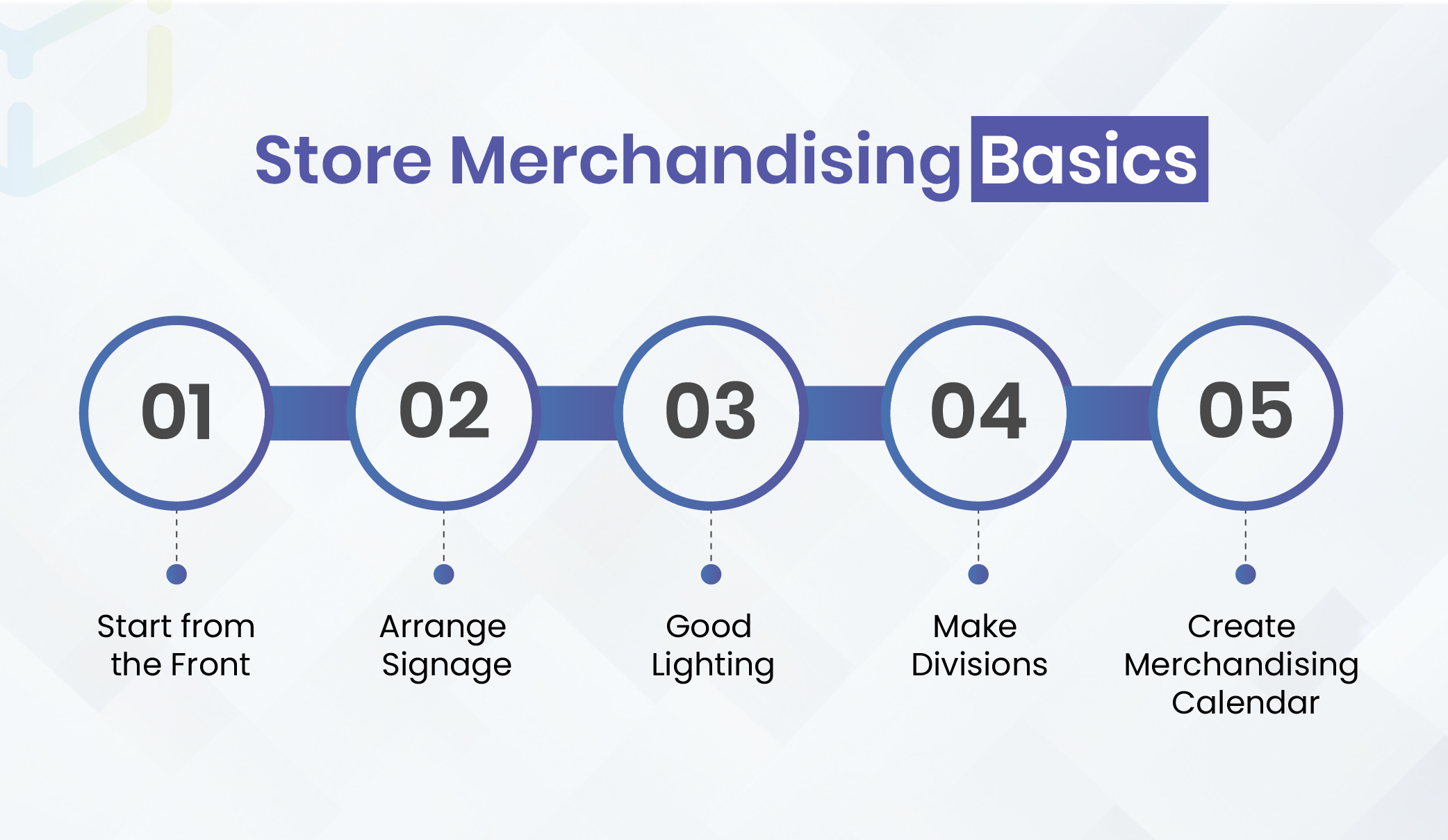
Start from the Front
First impressions have a strong effect on customer perceptions, so make sure it is highly positive. The front of your store should be inviting and give them a good idea of what to expect.
Also consider a signature scent that can create a pleasant experience for customers when they walk in.
Arrange Signage
When visiting your store for the first time, your customers will need to know where to find the products they are interested in. Putting signs in the right places is extremely helpful in this regard. These will help your customers navigate your store with ease to the products they want.
Shoppers tend to travel clockwise, so create signage that accommodates this direction.
Good Lighting
Most people enjoy shopping in brightly lit areas. Hence, your store should have plenty of lights to orchestrate a bright ambiance.
Remember that good lighting can make your retail space feel more spacious.
Beaming can direct customers’ attention towards products or signage, so use it wisely.
Make Divisions
Arrange visual barriers between departments for a more cozy and intimate feel. Aesthetically appealing barriers and backdrops are helpful for drawing the attention of customers and drawing them in. Make sure your displays are well-organized and beautifully arranged.
Create a Calendar for Merchandising
Your merchandising plan will have several key components, including key events, new products, current promotions, and reviews of previous merchandising plans. You must factor in all these aspects to set up your merchandising calendar.
A key benefit is that it will keep you ahead of all promotions, local events, seasons, and holidays.
Now that the basics of retail merchandising are covered, it’s time to delve deep into the details.
Retail Visual Merchandising – Is It the Same as Retail Merchandising?
Retail visual merchandising involves everything that customers can see in your store. It helps provide a highly positive shopping experience.
If you also have a digital presence for selling products, visual merchandising should also extend to this sales channel as a key component of your omnichannel strategy.
By maintaining a consistent plan for both platforms, your shoppers can enjoy a good brand experience both online and in-store.
However, it is essential to note that visual merchandising has some distinct differences from retail merchandising. Visual merchandising is a more extensive marketing strategy. It is concerned with organizing fixtures, shelves, and merchandise in a way that will improve sales. It also involves cleaning everything and ensuring that all lights, signage, and fixtures are functioning as intended.
As part of a visual merchandising strategy, you can create aesthetically pleasing displays. Signage should also be arranged to facilitate customers. Using consumer psychology, you can design and organize these elements so that customers feel compelled to buy more items beyond their initial purchases.
How to Create Eye-Catching Retail Displays
Your merchandising plan can get off to a great start if you ask the right questions. Here is what you should be asking.
- Does a product have the profit margin necessary to be displayed prominently? Will it draw greater attention if you display it in the window or in a different position?
- Is a high-value product available for a limited time only? If yes, you may want to keep it in a prime location where it will get noticed more.
- Can you bundle the item? This is a great way to make a good deal that will attract customers.
- Use digital displays, but don’t use them to overtake or replace main displays.
Design Attention-Catching Product Displays
You should design store displays to grab customer attention so they don’t just walk past. Images and messages should give them an idea of how they can use or experience the product. This type of engagement makes them more likely to make a purchase. The display should inform buyers about how they can benefit from and enjoy products they hadn’t previously considered.
It makes far more sense to put together complementary items so that buyers are encouraged to buy more in addition to their preplanned purchases. Complimentary displays also send a positive message that all items of a particular type that customers want are there in front of them in one place.
Placing complementary items also seems more logical to buyers and, therefore, less overwhelming. For example, if you place lawn mowers, seeds, and shears in one place, it will make more sense for customers and will thus encourage them to buy more. For example, if someone comes for pruning shears and sees a lawn mower on the side, they will remember that, besides cutting plants, they also need something better for trimming grass. So why not buy this latest lawn mower?
You can also add props where appropriate to send the right vibes. For example, having a teddy bear next to the barbecue will be highly welcoming for customers and make them feel right at home.
There should be good lighting at all times for all products. Avoid cramming too many products into one area, as it can feel overwhelming and drive customers away.
Signage
Three kinds of signage are used in stores.
Directional: As implied by the name, these signs give the direction to customers for their desired product type.
Informative: Give information on locations like the checkout, customer service points, toilets, and so on.
Invitational: These are carefully composed words that attract customer attention and inspire them to explore the store.
Signs should be inviting, informational, and directional.
When designing signage, keep in mind what customers ask most. Customers often want to find product categories and store information.
Advanced Retail Merchandising
Learn about advanced retail merchandising tactics that will revolutionize your retail strategy.
Market Research
Research the market to find out what buyers want. You can buy the right items that will sell fast this way. You can plan your store layout and group items accordingly.
Cleaning and Stocking
Make sure your store is clean and well-stocked for a good shopping experience. Daily store cleaning is necessary for customer satisfaction. Besides daily cleaning, the shelves should be restocked so that the store will be ready to welcome customers again the next day.
Besides dust and debris, you should also take care of clutter. Take a walk around the store to identify anything that feels overwhelming or distracting. Are shoppers being met with excessive messages? Have products been kept at eye level to facilitate engagement? Watch out for anything that feels overwhelming or confusing.
Keep Products Accessible
Products should ideally be at eye level to attract attention and drive engagement. Of course, not all items can be placed at this optimal height. Hence, you should place popular products at this level for increased sales.
Furthermore, best-selling products should be kept at the storefront. Shopper interest often goes down as they move deeper into the store.
Keep rotating your products across different aisles and display points. This is known to increase sales.
Sales and Promotions
Customers are always looking for a good deal. With sales and promotions, you can motivate buyers to purchase from you and turn them into loyal customers. Make sure stickers and signs are in place to show discounted items clearly.
Discounted items should be kept at the back, so that customers have to walk past other products (and thus notice them) to reach discounted items.
Besides sales and promotions, you can also provide free demos and samples to drive engagement, which will ultimately boost sales.
To sell more electronic items, you can set up a demonstration table where customers can try out your electronic items.
To sell more food products, you can provide free taste samples.
Benefits of Merchandising In Retail
Effective merchandising in retail provides several key benefits for your business.
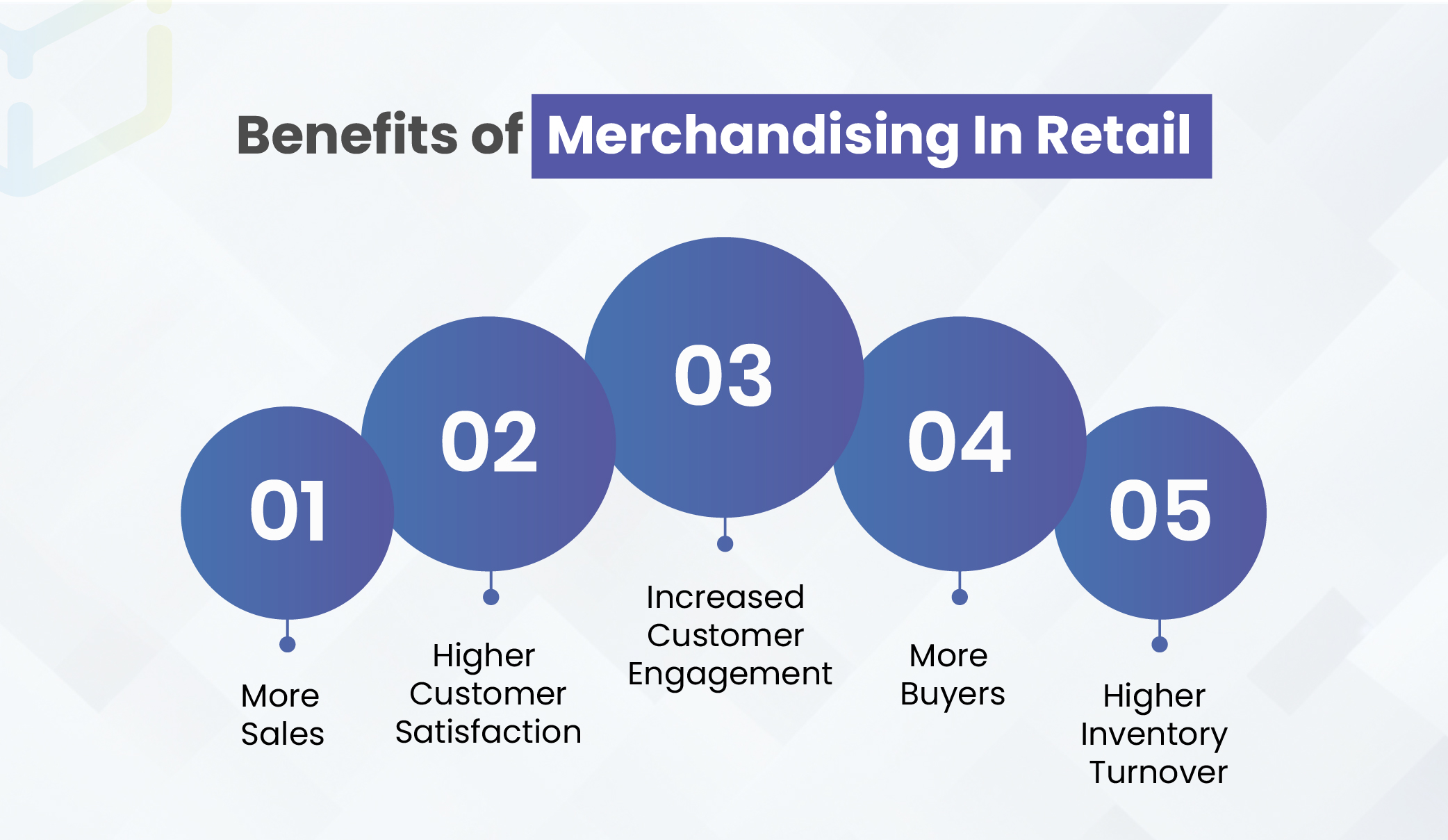
More Sales: Smart retail merchandising can help you sell more. For example, placing a beverage vending machine near the checkout encourages customers to purchase drinks while they wait.
Higher Customer Satisfaction: A visually appealing store creates a better brand image. Good product placement helps buyers easily find what they need. Customer satisfaction goes up as a result.
Increased Customer Engagement: Thanks to a good store experience, buyers will spend more time buying and spread the word on social media.
More Buyers: A store that looks inviting draws in more people, turning window shoppers into paying customers.
Higher Inventory Turnover: Well-stocked shelves and strategically placed items make it easier for customers to buy. More items are sold, leading to an increase in inventory turnover.
Retail Merchandising Services
Retail merchandising services implement proven retail merchandising strategies to allow their customers to sell more goods. They take all steps necessary to enhance the customer experience and facilitate the customer journey so that sales volume goes up as a result. The service may be provided in-house or outsourced to a third party.
Bottom Line
Despite the continued rise of ecommerce, there can be no doubt that in-store shopping is here to stay. Brick and mortar stores won’t go away anytime soon, and the reasons for this are clear. People want to hold products in their hands and take a close look at them before making a purchasing decision.
Hence, an omnichannel strategy is vital. Besides providing a great online experience, retailers must also orchestrate a stellar in-store experience through effective retail merchandising.
But no matter what your retail merchandising strategy is, one thing is for sure. You need a fast-moving supply chain, efficient warehouses, and a powerful WMS to ensure that stock is available on time.
Hence, you can rely on the proven retail system WareGo to save costs and boost profit margins with smart, lean inventory.
Get your free demo to see our cutting-edge platform live in action.
Start My FREE Demo!FAQs
What is retail merchandising?
Retail merchandising involves arranging products intelligently, optimizing the retail outlet space, placing signs, and so on. The aim is to encourage visitors to purchase more goods from your retail outlet.
What is the role of a retail merchandiser?
The retail merchandiser is a professional who specializes in enhancing your retail space to drive more sales.
Here is what they do.
- Planning: They determine how much of each product should be purchased.
- Monitoring: They track which products sell well and which don’t.
- Adjustment: They offer discounts or promotions to clear out slow-moving goods.
- Availability: All products should be in stock and placed correctly on shelves.
In short, they take all steps necessary to lower costs, boost profit margins, and drive more sales for your retail store.
What is an example of retail merchandising?
A simple example of retail merchandising is showcasing items in brightly lit product displays
Here are some more simple examples.
- Keeping popular goods at eye-level on shelves to drive engagement
- Ensuring that stock is always available to avoid stockouts and lost sales
- Putting complementary goods together – like keeping chips next to salsa
What are the four types of merchandise?
Here are the four types of merchandise based on commonly observed buying habits:
Convenience Goods: These are often low-priced goods that people purchase routinely without giving them much thought, such as milk, bread, and newspapers.
Shopping Goods: Buyers conduct thorough research before purchasing these more expensive items, considering reviews, features, prices, and other factors. Examples include electronics, appliances, and furniture.
Specialty Goods: These items are often luxury, branded, or high-quality products that people are willing to pay a premium for, such as designer shoes, luxury watches, and high-end cars.
Unsought Goods: These are goods that people are often not aware of or don’t want. Hence, a lot of effort goes into directly marketing these goods to prospects, like insurance plans, niche items, or innovative goods.
